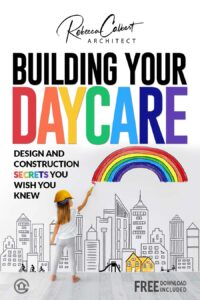Have you ever wondered how to effectively maintain a clean and healthy environment for children while managing a childcare business? As a childcare business owner, the well-being and safety of the children you care for is your top priority. One of the major aspects that contribute to a hygienic environment is the cleanliness of the toys the children use every day. With kids continuously interacting with toys, it becomes crucial to ensure these toys are not just clean but also properly disinfected.
Cleaning and disinfecting children’s toys isn’t just about ‘washing away’ visible dirt; it’s about implementing practices that prevent the spread of germs, creating a safe space for children to play and learn. In this article, you’ll uncover expert tips and detailed strategies to enhance your cleaning routine, ensuring it is both efficient and effective.
Understanding the Importance of Clean Toys
When it comes to young children, toys are more than just items of play. They can be tools for learning, comfort objects, and social interaction facilitators. However, they are also potential carriers of germs and viruses. In an environment with multiple children, toys can transfer infectious agents from one child to another, increasing the risk of diseases.
Health Implications
The health implications of neglecting toy hygiene can be significant. Cross-contamination from dirty toys can lead to common colds, flu, stomach bugs, and even more serious illnesses. Hence, understanding the role toys play in transmitting infections is a critical step in ensuring a safe childcare setting.
Regulatory Considerations
Apart from health implications, staying compliant with hygiene regulations is essential. Many regions have set guidelines for childcare centers regarding the cleanliness of toys and play areas. Ensuring your practices are up to code not only promotes health but also protects your business from potential legal consequences.
Differentiating Between Cleaning and Disinfecting
At this point, you might be wondering about the difference between cleaning and disinfecting. It’s a distinction that’s important to understand for maintaining a sanitized environment.
Cleaning
Cleaning refers to the removal of debris, dirt, and some germs. It typically involves using soap and water to wash surfaces. Cleaning can take away the substances that germs thrive on, helping to reduce their numbers but not necessarily eliminating them.
Disinfecting
Disinfecting, on the other hand, involves using chemicals to kill germs on surfaces. It doesn’t necessarily clean dirty surfaces but is crucial for lowering the risk of spreading infections. To effectively disinfect toys, it’s often necessary to clean them first to ensure surfaces are properly reached by disinfectants.
Developing a Toy Cleaning Routine
Having a structured routine for toy cleaning and disinfecting can make this task more manageable and effective. Here are some steps you can incorporate into your cleaning schedule:
Daily Cleaning
Establish a daily routine for cleaning toys that are used frequently. This can include wiping down non-porous toys with soap and water or using wipes that are safe for children. Focus on items that are often shared and may have come into contact with bodily fluids, like drool or mucus.
Weekly Deep Clean
For toys made from durable materials, consider a weekly deep clean. This could involve soaking toys in a tub of soapy water, followed by a rinse and air drying. Toys such as blocks or plastic figures that aren’t overly intricate can benefit from this approach.
Monthly Disinfecting
At least once a month, conduct a comprehensive disinfecting session. After cleaning the toys, apply an appropriate disinfectant that addresses specific germs. Always refer to the manufacturer’s guidelines to ensure the solution is suitable for the toy material.
Choosing the Right Cleaning Products
Selecting safe and effective cleaning products is essential when dealing with children’s toys. Not all cleaning agents are safe for little hands and mouths, so here are some tips for selecting the right ones:
Non-toxic Cleaners
Opt for non-toxic cleaning products that are free from harsh chemicals. Look for certifications or labels indicating the product is safe for use around children. Products containing natural ingredients like vinegar or baking soda can often serve as effective cleaners.
Appropriate Disinfectants
When choosing a disinfectant, consider products approved by health authorities such as the Environmental Protection Agency (EPA). These products are proven to eliminate germs and are usually safe when used as directed. It’s crucial to follow the product instructions to ensure effectiveness while maintaining safety standards.
Understanding Toy Materials and Their Cleaning Needs
Different toys require different cleaning methods, based on materials they are made from. Understanding the specific needs of various toy materials can prevent damage and ensure optimal sanitation.
Plastic Toys
Plastic toys are generally easy to clean and can withstand various cleaning agents. Most plastic items can be submerged in warm, soapy water, scrubbed gently, and dried. For intricate toys, use a small brush to reach crevices.
Plush Toys
Cleaning plush toys can be a bit trickier due to their absorbent nature. A gentle cycle in the washing machine usually suffices, but always check washing instructions on the label. Some plush toys are better suited to surface cleaning or hand washing to preserve their textures and forms.
Wooden Toys
Wooden toys require careful handling since submersion can cause warping. Wipe them down with a damp cloth and mild soap, ensuring you remove excess water immediately. Use a natural disinfectant spray that’s safe for wood, avoiding oversaturation.
Effective Strategies for Disinfecting Toys
In addition to cleaning, disinfecting toys is a crucial part of maintaining a healthy childcare environment. Here are some effective strategies to ensure comprehensive disinfection:
Steam Cleaning
Steam cleaning is an eco-friendly option that uses high temperatures to kill germs. Suitable for a variety of toys, especially those that can’t be immersed in water, steam cleaning is both effective and chemical-free.
Use of UV Light
UV light sanitizers can kill bacteria and viruses on toy surfaces. They’re a great option for electronic toys or larger sets that are difficult to clean with water. However, safety precautions should be strictly adhered to when utilizing this method.
Double Rinsing Method
For toys involving complex designs or potential residue issues, a double rinse method post-disinfection can be beneficial. This entails washing, applying a disinfectant, and rinsing thoroughly again to ensure no disinfectant remains on the toy surfaces.
Special Considerations for High-Traffic Toys
Some toys are more prone to accumulating dirt and germs due to their high use. Understanding the special needs of these toys can help in maintaining their cleanliness:
Toys for Infants
Since infants are highly susceptible to infections and likely to put toys in their mouths, it’s vital that their toys undergo more frequent cleaning and disinfecting.
Shared Toys
When multiple children use the same toys, as is often the case with playrooms and playground sets, prioritize their sanitization. Implementing a mid-week cleaning of these items, in addition to regular routines, can significantly reduce germ build-up.
Toys in Outdoor Settings
Outdoor toys can accumulate more dirt and environmental pollutants. These should be washed and disinfected using sturdier methods, such as with a hose and outdoor-safe cleaning solutions.
Educating Your Childcare Staff
Even the best cleaning regime requires proper execution by informed personnel. Educating and training your staff on the procedures and importance of regular toy sanitation is essential for maintaining a healthy childcare environment.
Training Sessions
Organize training sessions that demonstrate proper cleaning practices. Consider using a hands-on approach, allowing staff to practice the techniques outlined in this article under supervision.
Checklists and Schedules
Providing clear checklists and cleaning schedules can help staff execute your cleaning plan effectively. This can ensure accountability and comprehensive coverage, preventing any toy from being overlooked.
Safety Measures During Cleaning
While maintaining a clean environment is important, ensuring the safety of both children and cleaning staff during the cleaning process is just as crucial.
Proper Ventilation
Ensure cleaning areas are well-ventilated to prevent the build-up of potentially harmful fumes from cleaning agents. A well-aired space not only ensures safety but also helps dried toys smell fresh and clean.
Personal Protective Equipment
Encourage the use of gloves and masks for staff when handling cleaning agents, especially those involved in heavy-duty disinfection. While many products are safe for toy surfaces, they can still cause skin irritation upon extended contact.
Eco-Friendly Cleaning Options
Conscious of environmental impacts, implementing eco-friendly cleaning practices reflects a responsible and sustainable approach. Many plant-based cleaners are biodegradable and still effective against germs, offering a green alternative to conventional cleaning products.
DIY Natural Cleaners
Simple DIY solutions composed of vinegar and baking soda can be used for effective cleaning. These natural ingredients are not only safe but also economical. Consider providing recipes for these mixtures to your staff for regular use.
Commitment to Sustainability
Making a commitment to sustainability by choosing reusable cloths over disposable wipes and recycling packaging waste can set a positive example and enhance the environmental consciousness of your childcare center.
Evaluating and Updating Your Cleaning Protocols
The world of microbiology is constantly evolving, and so should your cleaning protocols. Regular evaluation and updates can help address new health challenges or accommodate new toy materials.
Routine Assessments
Conduct routine assessments to ensure your cleaning procedures are effective. Gather feedback from staff and parents to identify any areas for improvement or concerns regarding the current protocols.
Staying Informed
Stay informed about any changes in health guidelines or new technologies that could impact how you approach toy cleaning. Attending seminars or workshops can be a great way to stay updated, network, and gather fresh ideas for enhancing your practices.
Conclusion
Maintaining a hygienic environment in your childcare business goes a long way in protecting the health of those under your care. By implementing a comprehensive cleaning and disinfecting protocol for toys, you are committing to the high standards necessary for safe and engaging learning environments. Remember, the effort you put into keeping toys clean and germ-free speaks volumes about your dedication to providing a healthy space for children. Through educated choices and diligent practices, you can significantly reduce the risk of infection, contributing to the overall well-being and enjoyment of the children you look after.

